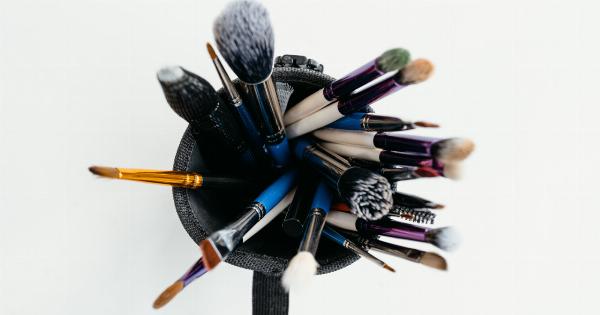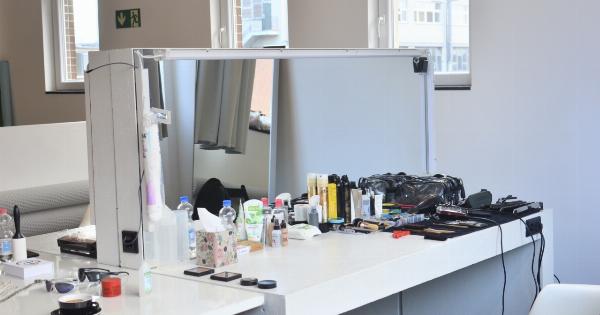Having healthy, glowing skin is a goal for many people. One way to achieve this is by incorporating exfoliation into your skincare routine.
Exfoliation involves removing dead skin cells from the surface of your skin, revealing a brighter, smoother complexion underneath. In this article, we will explore the benefits of exfoliation and provide some tips for incorporating it into your skincare routine.
The Benefits of Exfoliation
Exfoliating your skin regularly offers a host of benefits that go beyond just removing dead skin cells. Here are some key advantages of exfoliation:.
1. Removes Dead Skin Cells
Dead skin cells can accumulate on the surface of your skin, making it look dull and lackluster. Exfoliation helps to slough off these dead cells, revealing fresh, healthy skin underneath.
2. Unclogs Pores
When dead skin cells build up, they can clog your pores, leading to acne breakouts and blackheads. Regular exfoliation helps to unclog pores, preventing these skin issues.
3. Improves Skin Texture
Exfoliation promotes cell turnover, which means that newer, healthier skin cells rise to the surface more quickly. This can result in smoother, more even-textured skin.
4. Enhances Absorption of Skincare Products
By removing dead skin cells and unclogging pores, exfoliation allows your skincare products to penetrate deeper into your skin. This enhances their effectiveness and allows you to reap maximum benefits from your skincare routine.
5. Stimulates Collagen Production
Exfoliating can also stimulate collagen production in your skin. Collagen, a protein that gives your skin structure and elasticity, naturally declines with age.
By stimulating collagen production, exfoliation helps to maintain skin firmness and minimize the appearance of fine lines and wrinkles.
Types of Exfoliation
There are two main types of exfoliation: physical exfoliation and chemical exfoliation.
1. Physical Exfoliation
Physical exfoliation involves using a scrub or tool to physically remove dead skin cells from the surface of your skin. Scrubs often contain small particles like sugar or salt that slough away dead skin cells.
Tools like facial brushes or cleansing devices can also be used for physical exfoliation.
When using physical exfoliators, it’s important to choose ones with gentle, rounded particles to avoid causing micro-tears in your skin.
Additionally, it’s best to avoid physical exfoliation if you have sensitive or acne-prone skin, as it may aggravate these conditions.
2. Chemical Exfoliation
Chemical exfoliation involves the use of acids or enzymes to dissolve dead skin cells. It typically comes in the form of toners, serums, or masks containing ingredients like alpha-hydroxy acids (AHAs) or beta-hydroxy acids (BHAs).
Chemical exfoliation can be a gentler option compared to physical exfoliation, making it suitable for sensitive or acne-prone skin types.
AHAs, such as glycolic acid or lactic acid, work by loosening the bonds between dead skin cells, while BHAs, like salicylic acid, penetrate the pores to unclog them.
How to Incorporate Exfoliation into Your Skincare Routine
Now that you understand the benefits and types of exfoliation, here are some tips for incorporating it into your skincare routine:.
1. Determine Your Skin Type
Before starting any exfoliation routine, it’s important to determine your skin type. This will help you choose the most suitable exfoliation method and products for your specific needs.
If you’re unsure, consult with a dermatologist or skincare professional.
2. Start Slowly
If you’re new to exfoliation, start by incorporating it into your routine once or twice a week, depending on your skin’s tolerance. Over-exfoliating can lead to skin irritation and dryness.
Gradually increase the frequency as your skin becomes accustomed to it.
3. Choose the Right Products
When selecting exfoliating products, consider your skin type and the type of exfoliation you prefer. Look for products specifically formulated for your skin type, whether it’s physical or chemical exfoliation.
4. Follow Instructions
Always follow the instructions provided with the exfoliating product. Pay attention to the recommended amount to use and the duration it should be left on your skin. Overusing or leaving exfoliating products on for too long can lead to skin irritation.
5. Moisturize and Protect
After exfoliating, it’s essential to moisturize your skin to replenish moisture and maintain its hydration. Additionally, always apply sunscreen before heading outdoors, as exfoliated skin can be more sensitive to the sun’s harmful rays.
6. Be Gentle
Whether you choose physical or chemical exfoliation, be gentle when applying the products. Avoid scrubbing too harshly or using excessive force, as this can damage your skin.
7. Listen to Your Skin
Pay attention to how your skin reacts to exfoliation. If you experience persistent redness, irritation, or excessive dryness, it may be a sign that the exfoliation method or product is too harsh for your skin.
In such cases, consult a dermatologist for guidance.
Conclusion
Exfoliating your way to healthy skin is a simple yet effective step that can significantly improve your complexion. Whether you choose physical or chemical exfoliation, always consider your skin type, start slowly, and listen to your skin’s needs.
With regular exfoliation, you can achieve a radiant and healthier-looking complexion.






























